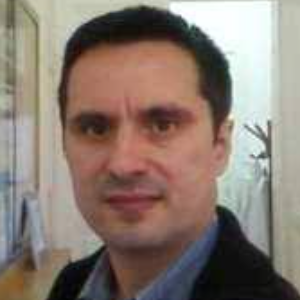Title : The bone-cartilage interface: A complex biological barrier with potential therapeutical targets
Abstract:
The crosstalk of cartilage and subchondral bone is thought to be a central process in the regulatory pathways of osteoarthritis (OA). Histological changes in OA comprise degeneration and decellularization of the cartilage, elevated bone turnover and subchondral bone attrition. Our research Group, along others recently described that subjacent bone marrow changes are also detectable in animal models with advanced disease stages. An increasing number of findings attest that the junction of the cartilage and bone is a complex interface, with versatile metabolic interactions and blood vessels penetrating to the close proximity of deep cartilage. Osteoblasts, osteoclasts and chondrocytes are the key cellular elements of osteoarthritis progression. Their crosstalk seems to be rather subchondral bone-driven, and is influenced by at least 3-4 major signaling pathways. Among these, the OPG/ RANKL/RANK system regulates the differentiation of osteoclasts. In human osteoarthritic cartilage, an increased RANKL/ OPG ratio was highlighted. We found high levels of osteoprotegerin (OPG) in the synovial fluid of OA patients in comparison with their serum levels, however, no significant difference between synovial OPG of early and advanced OA could be demonstrated. The Wnt/β-catenin signaling pathway contains other important regulatory molecules which may be crucial for the development of OA. Wnt agonists, like WISP-1, Wnt 16 and Wnt 2-B are active in the osteoarthritic cartilage and provoke important matrix degradation. Increased levels of inhibitors, like serum Dickkopf-1 (DKK-1) or sclerostin were associated with slow disease progression, while DKK-1 antisense oligonucleotids protected the cartilage and reduced bone turnover in animal models. Moreover, the Wnt/β-catenin signaling pathway interacts with some of the cytokine signaling pathways (TGFβ). The growing evidence of pronounced effects confer a special importance to actors of the Wnt-signaling pathway, some of these being proposed molecular targets of specific biological therapy. We present primary research results referring to Wnt gene expression and protein synthesis in different phases of osteoblast differentiation, in order to focus attention on the possibilities of Wnt-pathway modulation.
Takeaway Notes:
•The cartilage-subchondral bone interface is an important barrier with regulatory roles in osteoarticular diseases.
•The cellular elements of the interface with intensive crosstalk are osteoblasts, osteoclasts and chondrocytes.
•The OPG/RANKL/RANK and the Wnt/β-catenin pathways are key regulatory mechanisms in osteoarthritis progression.
•Some antagonists of the Wnt signaling pathway are candidate molecular targets for specific therapy in osteoarthritis.
•Further understanding of the Wnt pathway’s role in osteoarthritis could define novel mechanisms of pharmacological interest.



